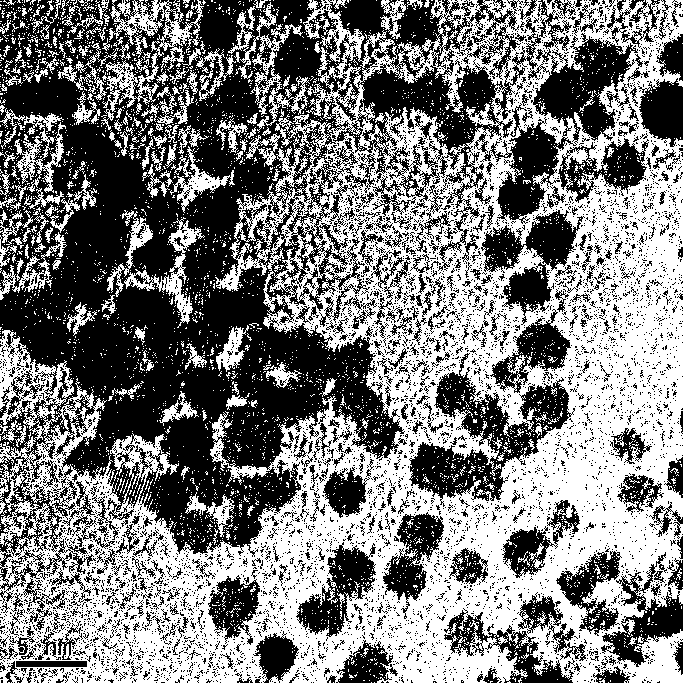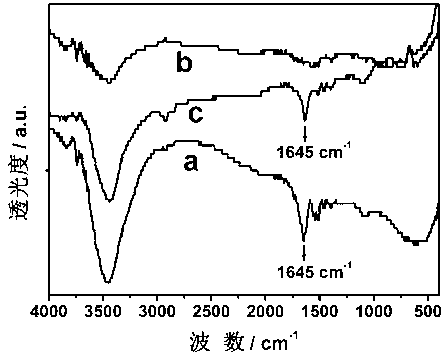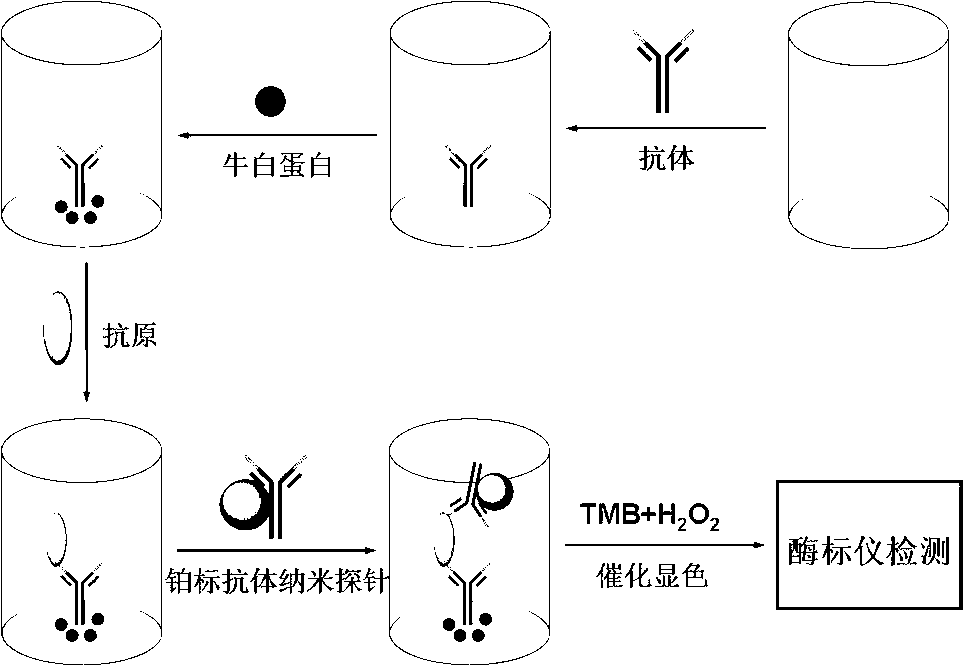Immunoassay method based on platinum nanoparticle mimic enzyme
A platinum nanoparticle and immunoassay technology, applied in the field of immunoassay based on platinum nanoparticle-mimicking enzymes, can solve the problems of insufficient immunoassay sensitivity, insufficient catalytic activity, low detection line, etc. The effect of large-scale preparation and low detection line
- Summary
- Abstract
- Description
- Claims
- Application Information
AI Technical Summary
Problems solved by technology
Method used
Image
Examples
Embodiment 1
[0028] 1. Preparation of Platinum Nanoparticle Mimetic Enzymes
[0029] In the state of stirring, add 400mL potassium chloroplatinate (K 2 PtCl 6 ) solution. After 1 minute, add 100 mL of 1% (w / w) sodium citrate to the above mixture, and then add 400 mL of freshly prepared 1% (w / w) sodium citrate and 0.08% (w / w) a mixed solution of sodium borohydride. The above reaction solution was placed in an oil bath at 90° C. and heated for 10 minutes to obtain a stock solution of platinum nanoparticle-mimicking enzyme. The prepared platinum nanoparticles mimic enzymes were characterized by transmission electron microscopy, such as figure 1 shown. From figure 1 It can be seen that the size distribution of the prepared platinum nanoparticles is uniform, and the particle size distribution is between 3 and 5 nm.
[0030] 2. Preparation of platinum-labeled antibody nanoprobe complexes
[0031] First, 1.0 mL of the prepared platinum nanoparticle mimic enzyme was adjusted to pH 8-9 wit...
PUM
| Property | Measurement | Unit |
|---|---|---|
| Particle size | aaaaa | aaaaa |
Abstract
Description
Claims
Application Information
 Login to View More
Login to View More - R&D
- Intellectual Property
- Life Sciences
- Materials
- Tech Scout
- Unparalleled Data Quality
- Higher Quality Content
- 60% Fewer Hallucinations
Browse by: Latest US Patents, China's latest patents, Technical Efficacy Thesaurus, Application Domain, Technology Topic, Popular Technical Reports.
© 2025 PatSnap. All rights reserved.Legal|Privacy policy|Modern Slavery Act Transparency Statement|Sitemap|About US| Contact US: help@patsnap.com



